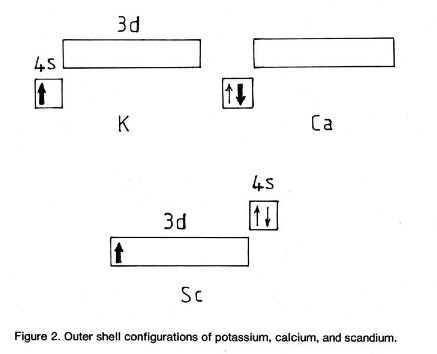Scandium is element 21.
Its electronic configuration is originally:
#1s^2 2s^2 2p^6 3s^2 3p^6 3d^1 4s^2 4p^0#
For Scandium in its ground state, the #3d# orbitals are slightly lower in energy than the #4s# orbitals (it's right around a "transition point" for orbital energy convergences towards the #d# orbital energies). It's a peculiar atom, and the orbital-filling order is a bit different than normally expected.
If you can access ACS articles, Eric Scerri has a diagram showing the erroneous switching of energy levels near Scandium (the #4p# stays):

(from http://pubs.acs.org/doi/pdf/10.1021/ed066p481)
Note one important sentence he writes:
"One of the most frequently used alternative methods consists of the Hartree-Fock approximation, which shows that the energy of the 4s orbital is always higher than that of 3d." So... always.
Using the selection rules of #DeltaL = pm1# and #DeltaS = 0# (and thus #DeltaJ = 0, pm1#), the transition must be diagonal---the new orbital must be a different energy level (doesn't necessarily mean that #Deltan >= 1#) and only single steps are allowed when going into an orbital of a different angular momentum quantum number (#s->p# for #l = 0->1#, #p->d# for #l = 1->2#, etc.).
This rules out a transition from the #3d# into the #4s# due to #|DeltaL| = 2#, and leaves either a transition from the #4s# to the #4p#, or #3d# to #4p#. Since the #4s# is slightly higher in energy at Scandium than the #3d#, and the #4p# is higher in energy than the #4s#, the electron is promoted from the #4s# to the #4p#.
The diagonal path of the transition is due to a change in #l# (horizontal) and a change in energy level (vertical).
So, the first excited state is:
#1s^2 2s^2 2p^6 3s^2 3p^6 3d^color(blue)(1) 4s^color(blue)(1)4p^color(blue)(1)#


